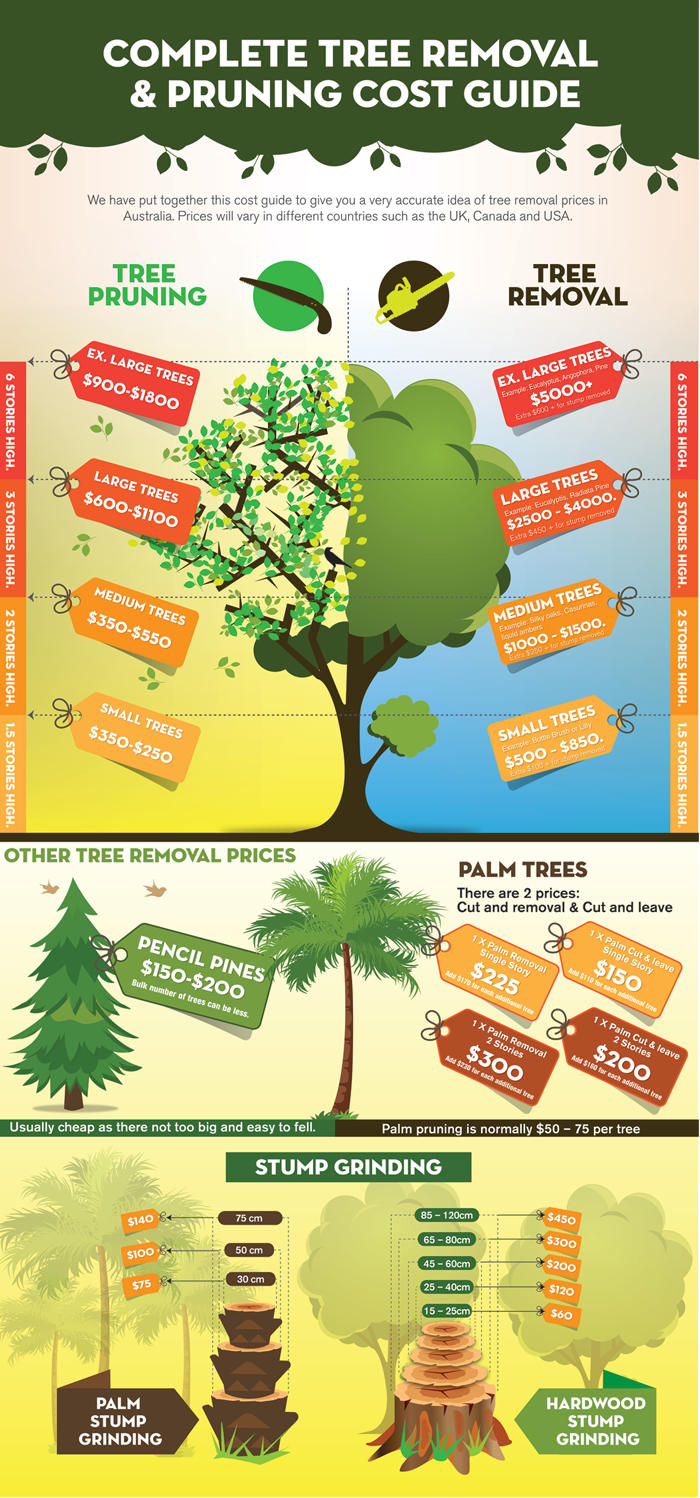When it concerns seasonal tree treatment, making certain proper monitoring prior to and after elimination can significantly impact the health and wellness and aesthetics of your landscape. By understanding the needed actions associated with evaluating tree health and wellness and preparing for removal, you can proactively safeguard your property. Yet what regarding the vital practices to comply with as soon as the tree is gone? Keep tuned to discover the necessary post-removal treatment actions that will certainly aid you grow a successful and lasting setting for your trees.
Pre-Removal Tree Care
Before attending to the elimination of a tree, it's critical to prioritize pre-removal tree care. Start by examining the tree's health and structural stability. Search for indicators of disease, insect problems, or any structural issues that may posture a security threat during removal. It's essential to consult with a certified arborist to figure out the very best course of action.
Pruning dead or diseased branches can avoid further damage to the tree and guarantee a smoother removal process.
Additionally, consider the ecological influence of removing the tree. Trees play an essential role in our environment, so planting a new tree in a suitable area can aid offset any loss. Make sure that you have the required permits and approvals for tree removal, especially if the tree is protected by local guidelines.
Seasonal Maintenance Tips
Examining your tree's requirements throughout the year is critical for its wellness and long life. To keep your trees in leading condition, adhere to these seasonal upkeep tips.
In spring, focus on trimming to get rid of dead or broken branches and motivate brand-new growth.
Summer season requires regular watering, especially throughout droughts, to ensure your tree remains hydrated.
As autumn techniques, keep an eye out for early signs of illness or stress, and think about applying compost to protect the roots throughout winter months.
In winter, beware when removing snow from branches to avoid breakage, and continue to monitor your tree's overall wellness.
Bear in mind to readjust your treatment routine based upon the details demands of your tree species and regional environment. By staying alert and positive throughout the seasons, you can help your trees prosper and grow for several years to come.
Post-Removal Tree Care
To make certain the health and wellness of your landscape also after tree elimination, proper post-removal care is vital. After a tree is gotten rid of, it's critical to fill the remaining hole with topsoil and small it to stop settling. This will aid preserve the integrity of the ground and protect against prospective dangers in the future.
Take into consideration planting brand-new vegetation instead of the removed tree to bring back the equilibrium and appearances of your landscape. Frequently visit my homepage to advertise the development of brand-new plants and avoid dirt disintegration.
Evaluate the bordering trees for any indicators of condition or anxiety that may have been triggered by the eliminated tree. Keep an eye out for bugs that could've been drawn in to the previous tree and take preventive measures to protect the remaining plant life.
If essential, consult with a specialist arborist to evaluate the impact of the removal on the surrounding trees and figure out any kind of additional treatment needed. By following these post-removal treatment actions, you can ensure the continued wellness and appeal of your landscape.
Conclusion
In conclusion, positive seasonal tree treatment is important for preserving the health and wellness and equilibrium of your landscape. By analyzing tree health and wellness, pruning, and talking to an arborist prior to removal, you can guarantee a risk-free process. After visit the following website page , filling up the hole, growing new greenery, and normal watering will promote brand-new growth and prevent erosion. Bear in mind to check surrounding trees for disease and seek more treatment steps from an arborist to keep your landscape thriving.
